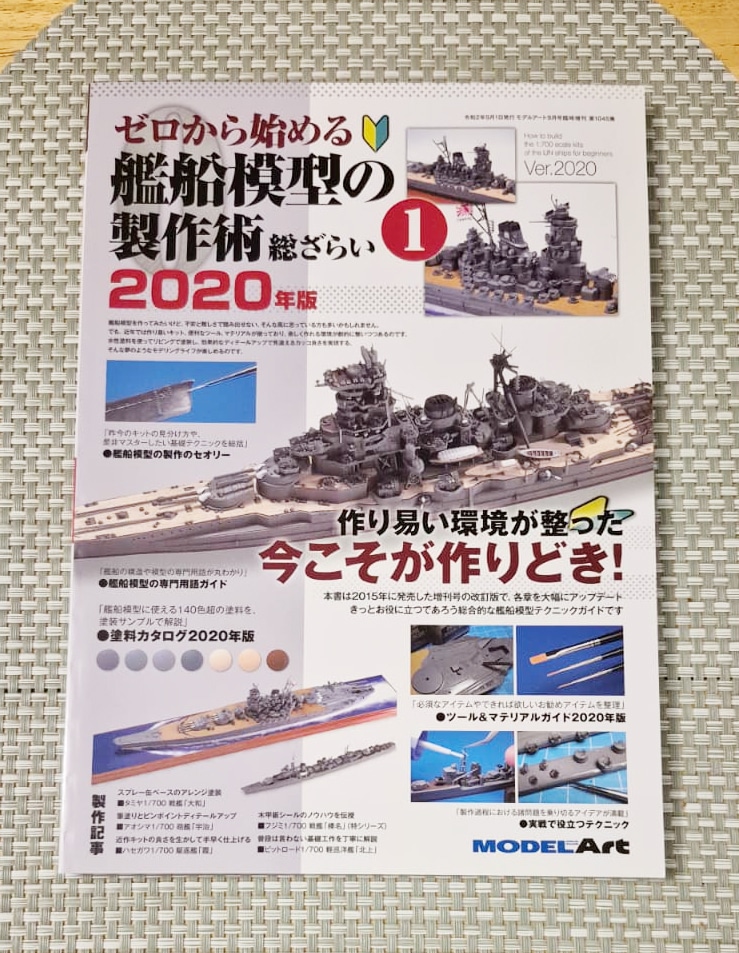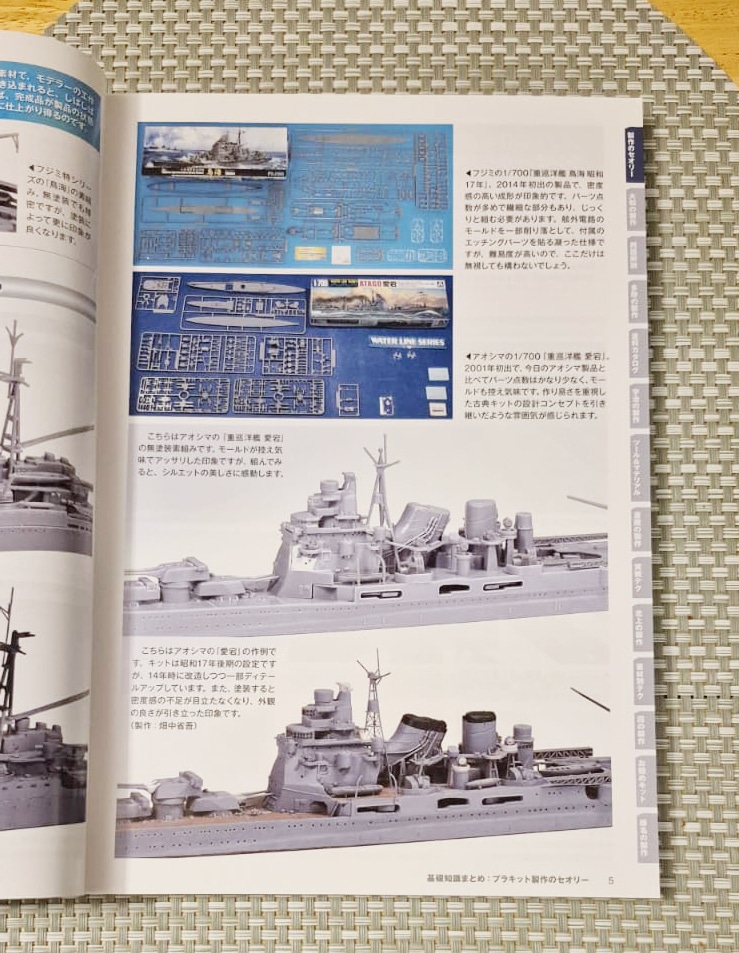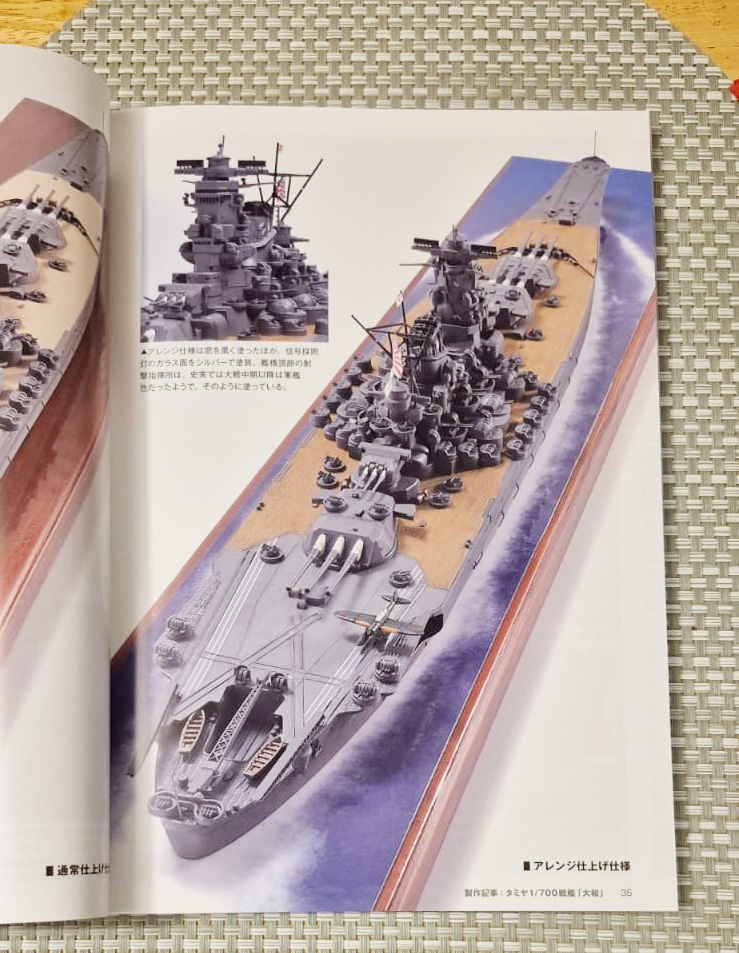Navigating the Waters of Ship Modeling with Model Art’s 2020 Guide

The Essential Compass: Navigating the Waters of Ship Modeling with Model Art’s 2020 Guide
Setting Sail: Looking Back at an Indispensable Classic
Few segments of the scale modeling world captivate with the same blend of historical gravitas and sheer complexity as ship modeling. From the sleek lines of a destroyer to the massive, bristling bulk of a battleship, the vessels of the world’s navies offer an endless source of inspiration—and challenge—to modelers.
As we look back from 2025, it’s clear that the hobby has continued its relentless march toward greater realism, with 3D-printed parts, highly detailed resin kits, and new weathering products setting even higher standards. Yet, the foundational knowledge remains timeless. It is precisely for this reason that we revisit a publication that, five years on, remains an indispensable authority for the craft: Model Art’s updated mook from 2020, Zero Kara Hajimeru Kansenshōkei no Seisakujutsu Sōzarai 2020 Nen-ban.
Translated as Zero to Start! Ship Model Making Guide 2020 Edition, this publication was, and still is, a comprehensive, beautifully illustrated, and logically structured masterclass designed to take you from a curious novice to a confident builder. Released as an update to their 2015 guide, the 2020 edition perfectly captured the state of the art at the turn of the decade. As someone who has navigated the sometimes-choppy seas of scale modeling for decades, I can attest that having a foundational resource like this has been invaluable to countless modelers since its release. It’s not just a collection of pretty pictures; it’s a methodical, step-by-step curriculum that continues to demystify the craft.
If you’ve ever been intimidated by the sheer number of parts, the delicate nature of photo-etched brass, or the prospect of painting a realistic wooden deck, this book remains your essential compass. Model Art did a stellar job in 2020, recognizing the constant evolution of tools, materials, and techniques—and those core lessons still ring true today.
Theory and Technique: A Solid Foundation
The core of any great hobby guide is its ability to break down complex procedures into understandable steps. Zero Kara Hajimeru excelled here in 2020, offering a strong theoretical grounding before diving into practical execution. The production articles are a clinic in clarity, using high-quality photography—evident even in the snippets I reviewed—to show crucial steps and details.
The book wisely begins at the absolute beginning: what to buy, how to prepare your workspace, and the basic principles of construction. For newcomers entering the hobby today, this section is still a goldmine. It prevents the common pitfall of a beginner being overwhelmed by a flood of specialized tools and jargon. Model Art clearly outlined the essential toolkit—your sprue cutters, files, glues, and basic paints—before introducing more advanced items.

Production Articles: Mastery in Miniaturization
The real meat of the guide is the showcase of detailed build articles. These are not just galleries of completed models but procedural deep-dives that demonstrate how to achieve impressive results. The focus is squarely on the Imperial Japanese Navy (IJN), which is natural given the publication’s origins, but the techniques shown are universally applicable.
A centerpiece of the guide appears to be the formidable battleship Yamato. The pages dedicated to this icon are fantastic, illustrating how to elevate a basic kit into a museum-quality display piece. Noticeably, the guide highlights different approaches:
- Standard Build: Focusing on fundamental assembly and painting for a clean, respectable finish.
- Arranged/Enhanced Finish: Showcasing how to incorporate aftermarket details—photo-etched parts, brass barrels, and resin upgrades—to dramatically increase realism and complexity.
One image, clearly showing the Yamato with a meticulously painted and weathered wooden deck and a dense array of anti-aircraft weaponry, serves as a powerful testament to the results achievable with the book’s guidance. The contrasting views of a standard versus an enhanced finish are brilliant, giving modelers clear objectives based on their current skill level and ambition.
Another excellent feature I noted in the samples is the attention paid to aircraft carriers, specifically the Sōryū. Ship models are not just the hull and superstructure; they often include a complement of aircraft. The guide dedicates space to detailing these tiny flyers, showing how crucial a realistic air wing is to the overall presentation of a carrier model. The sections on painting the planes—including the various camouflage schemes like the two-tone grey and the Ameiro (candy color) used by the IJN—provide immediate, practical reference material. The tips on using aftermarket accessories to “raise the feeling of refinement” are spot on—it’s the rigging, the tiny figures, and the finely etched radar antennas that transform a model from a toy into a miniature piece of history.
The Model Art Tool Chest: Catalogs and Guides
Perhaps the most practical and continually useful sections of the mook at the time of its release were the Tools & Materials Guide and the Paint Catalog. While five years have passed, these sections still offer a vital snapshot of the hobby in 2020 and provide a great baseline for modelers starting today.
Tools & Materials Guide 2020 Edition
The evolution of modeling tools is rapid, yet the fundamentals captured in this guide remain true. New types of cements, precision sanding devices, airbrush equipment, and weathering products emerge constantly. However, the core principles of using a photo-etch bender, a scribing tool, or a pin vise, as explained in 2020, are unchanged. This guide still helps modelers invest wisely in their hobby by clearly cataloging and explaining the function of different implements. The inclusion of photo-etched (PE) parts guidance, visible in one of the images, is especially important. PE is the single biggest leap in detail for ship modeling, and the guide’s explanation on how to handle, cut, and bend this delicate material is a timeless lesson for the intermediate modeler.
Paint Catalog 2020 Edition
Color accuracy is paramount in historical modeling. The Paint Catalog likely cross-referenced official IJN colors with commercial paint lines—a common and hugely beneficial feature of Japanese hobby publications. While new paint lines have appeared since 2020, the cross-referencing information for staple brands like Tamiya, Gunze Sangyo (Mr. Hobby), and others is largely unchanged and remains an excellent ready-reference for painting scheme accuracy—a detail that separates a good model from a truly great one.
The Verdict: A Beacon for Budding Shipwrights, Then and Now
Zero Kara Hajimeru Kansenshōkei no Seisakujutsu Sōzarai 2020 Nen-ban was a resounding success upon its release, and even from our vantage point in 2025, its quality is undiminished. It achieved its stated goal of being a beginner’s guide (Zero to Start!) while simultaneously offering enough robust information and advanced techniques to satisfy the intermediate and returning modeler.

The Enduring Value in 2025
- The Absolute Beginner: If you’ve just purchased your first 1/700 scale model, the step-by-step instructions and visual clarity are arguably better than any modern YouTube tutorial. This book teaches the why behind the how.
- The Returning Modeler: If you are coming back to the hobby, this 2020 guide serves as the perfect “bridge” publication, summarizing the state-of-the-art techniques—especially the use of PE and specialized rigging—that defined modern ship modeling as the hobby entered the new decade.
- The Enthusiast (Non-Japanese Reader): The visual instruction, the photography, and the catalog sections are so clear that even today, a modeler relying purely on the images and diagrams will glean an immense amount of value. Techniques like weathering, rigging, and painting are universal, and Model Art’s visual language is exceptionally effective, transcending time and language barriers.
In a hobby where the learning curve can feel steep, this Model Art publication continues to flatten it significantly. It is a brilliant example of how a technical guide can be both professional and approachable. By combining a systematic approach to construction with inspiring, high-detail examples—like the Yamato and Sōryū—and essential reference catalogs, the mook proves itself to be a comprehensive and enduring resource.
If your ambition is to build realistic, historically accurate, and beautifully detailed miniature warships, and you can still find a copy of this guide, secure it. It’s the definitive roadmap to mastering the art of ship modeling, and its lessons continue to be relevant on any hobby bench today. It proves that the joy of creation doesn’t have to be limited by inexperience; it simply requires the right mentor, and in 2020, Model Art provided one of the best.
Model Art Mook: Zero Kara Hajimeru Kansenshōkei no Seisakujutsu Sōzarai 2020 Nen-ban
- Target Audience: Beginner to Intermediate Ship Modelers
- Key Contents: Production Articles (IJN Yamato, Sōryū, and more), Theory, Tools & Materials Guide 2020, Paint Catalog 2020.
- Rating: 5/5 Anchors – An absolutely essential and historically important guide that remains highly recommended.
Model Art web site
What ship are you currently building, or what’s the most challenging aspect of ship modeling you’ve encountered so far?









